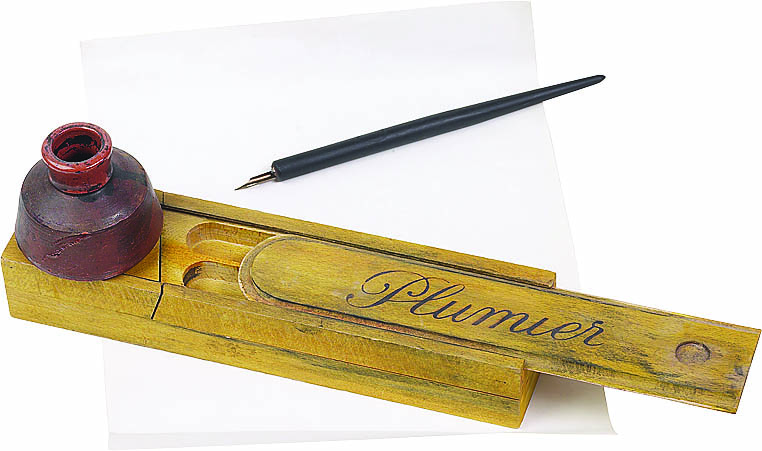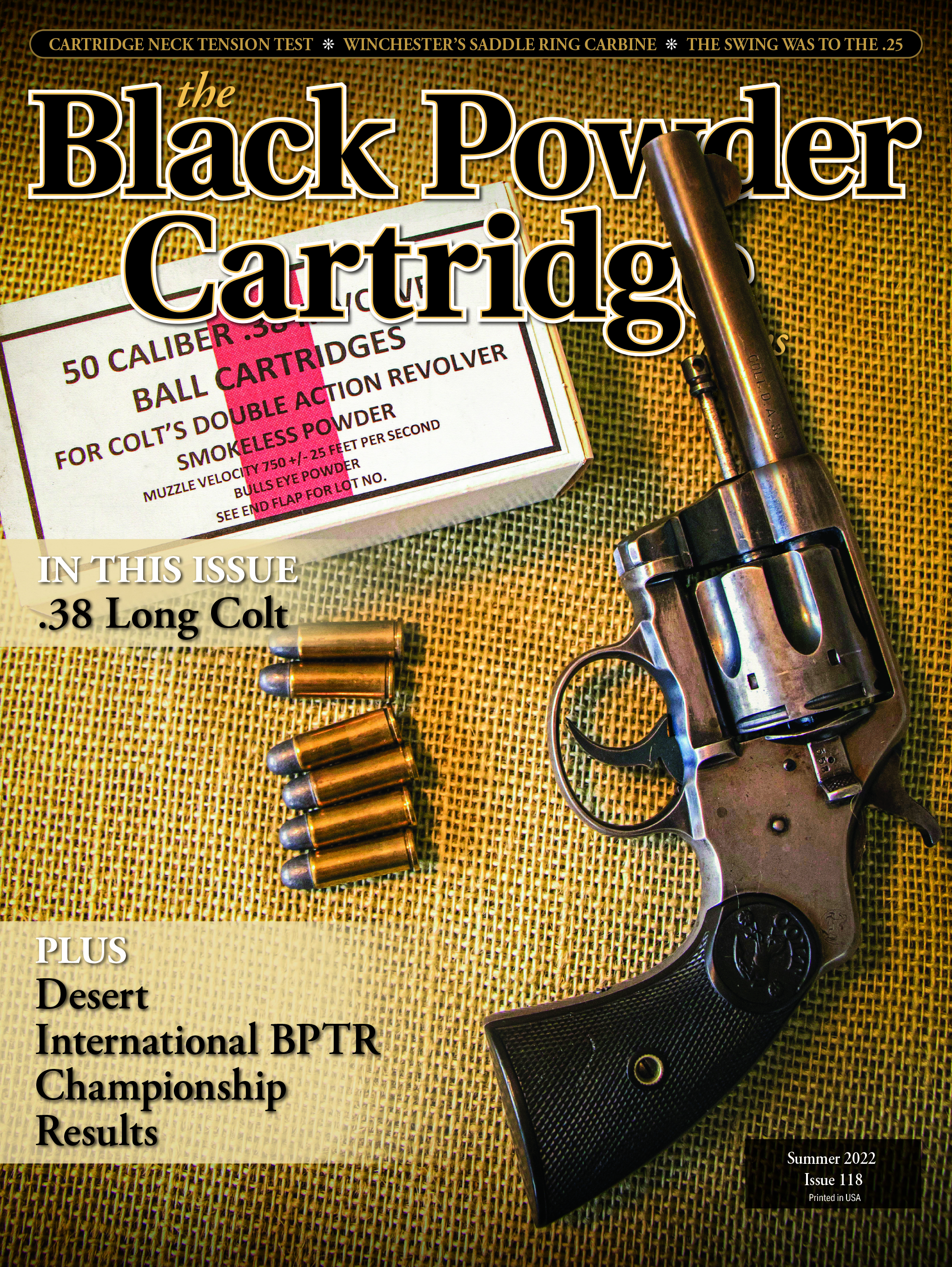Letters from Readers
Shooting Techniques with the Percussion Sharps
column By: Robert Baringer | June, 22

I want to thank The Black Powder Cartridge News for the articles on using linen cartridges in the percussion Sharps rifles as written by Mr. Mapoles. I have found them quite helpful, and I agree with everything he has said about loading and shooting the paper cartridges. This includes making sure the chamber and throat are clear before another shot is fired!
I would also like to add some comments that could extend some of his points. I shoot two reproduction Sharps percussion rifles, a .54 Sile Sharps and a .54 Shiloh Sharps “Business” rifle made in Farmingdale, New York. I cast my two bullet types from pure lead; one is the Buffalo-style flatnose slug (.541.543, 350 grain) supplied with my Shiloh rifle and the other is a Rapine pointed ring-tail (.544, 475 grain) bullet. My paper tubes are made from heavyweight silkspan sheets. Silkspan is a fiber reinforced thin paper that was used by airplane modelers as a covering over balsa wood frames. It was very strong and light. It was designed to absorb thin lacquer or, in my case, a mixture of saltpeter and water. I don’t think that it is still available; it is from a past age.
The papers are cut to an appropriate size depending upon desired cartridge capacity. The papers are then dipped in a thick mixture of saltpeter (potassium nitrate crystals) that were dissolved in water. The precut papers are allowed to completely air dry and then are rolled on a mandrel and glued with a “Pritt” glue stick. I use the plastic tube mandrel supplied with my Shiloh. This type of mandrel is nonstick and will allow easy removal of the completed glued tubes. The completed papers should be stored in an airtight container because saltpeter will absorb moisture. These papers burn up in the air with a crackling sound and with zero ash. The same goes when they are fired in the rifle chamber!
The paper tubes are then attached to the heel of the bullet by tying with a heavyweight sewing thread. The carbine papers are shorter and are filled all the way to the top (80 grains of 2Fg). In the Shiloh “Business” rifle, I use a reduced charge rather than the full capacity of 120 grains. That charge would generate a lot of recoil in a fairly lightweight rifle. I first pour in 35 grains of cornmeal, then seat a thin paper “separator disk” and finally 85 grains of 2Fg are poured in. Both cartridge tails are then twisted and hand-tied with the same heavyweight sewing thread. The bullets are only lubed when used at the range, and the completed cartridges are also stored in airtight containers.
I used to participate in Civil War target reenactment matches where in five minutes I could discharge up to 22 aimed shots. After each shot, I inserted a chamber and throat scrubbing stick. I don’t like to have any unburned powder or paper tube in the chamber for obvious reasons. To make sure this didn’t happen, I constructed the following tool out of a 12-inch length of a 12-gauge aluminum cleaning rod. I attached a wire chamber brush to the pre-threaded end. I formed a slight dogleg bend in the rod to allow easy access to the chamber. On the other end, I glued a wooden handle to aid in inserting and removing the cleaning rod. I attached a lanyard to the wooden handle and hung the tool from my cartridge belt. With this tool, the Sile Sharps can be shot any number of times, but not so with the Shiloh.
The Shiloh “Business” rifle is a completely different firearm to shoot. The tolerance is so tight that I cannot shoot more than three rounds before the action jams up due to buildup of black-powder fouling. It becomes so tight that I must remove and completely disassemble the mortise block, clean it thoroughly, relube it and reassemble back into the rifle. Using the chamber cleaning rod does keep the accuracy consistent. This early Farmingdale Shiloh has a counterbore ahead of the chamber. Using the cleaning rod allows the bullet to be consistently seated in the throat and keep powder fouling from building up in the chamber.
I’ve used the above methods for decades and I’ve had no problems shooting either rifle, this includes using the reduced cornmeal loads. Because I’m using a tied cartridge tail that is cut off when I close the action, there is no way to compress the powder or keep it compressed. This doesn’t seem to be a problem with accuracy.
I’ve been a longtime subscriber of the magazine. Keep up the good work!
Robert Baringer


